Photographer and surrealist Lee Miller gets a long-overdue retrospective at Tate Britain
Lee Miller ushered in a new era with her avant-garde and raw photography. Now, Tate Britain celebrates her life's work
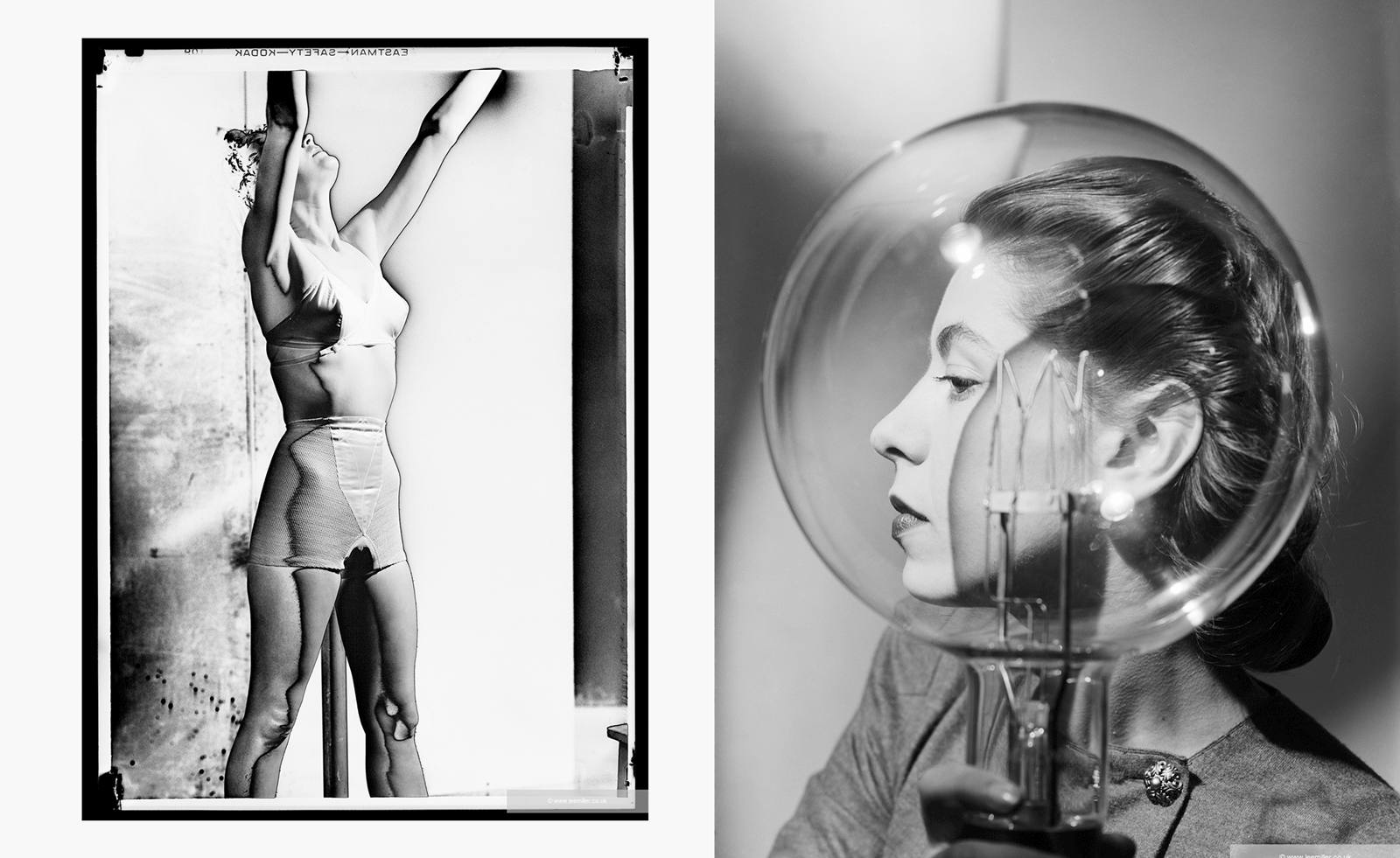
Not long before Tate Britain opened photographer Lee Miller’s largest retrospective to date (2 October 2025-15 February 2026), I travelled to her former home, Farleys House, tucked away in the Sussex countryside. Miller and husband Roland Penrose created a surrealist haven upon moving there in 1949, spending the next 35 years filling the home and gardens with contemporary art. Friends and artists Pablo Picasso, Man Ray and Leonora Carrington were frequent visitors, leaving their mark. Picasso daubed a smiley face on the tiles above the Aga, while Joan Miró absent-mindedly twiddled wine-bottle wrapping into a sculpture, which sits in the dining room.
The house reveals a warm, sociable side of an artist who can be hard to define. Born in New York in 1907, Miller was adept at reinvention; sometime model, fashion photographer and acclaimed war photographer, she shied away from discussing the last – her son, Antony Penrose, only came upon the fact after her death in 1977.

Photomaton portraits of Lee Miller, c.1927. Lee Miller Archives
At Farleys, there is a less serious Miller than the surrealist artist who defined a new era of photography. Here is a woman who cared deeply for her work and family, and enjoyed cooking and entertaining. Her cookbook, on sale in the gift shop at Farleys, unites creativity with culinary flair (her ‘green green chicken’, with a pea and parsley sauce, was a happy accident, while ‘goldfish’, a baked codfish, is garnished unusually with carrots and butter).
Miller’s long-overdue retrospective at Tate Britain shifts the focus back to Miller’s status as an experimental, talented and multifaceted photographer. Becoming interested in the medium during her time as a model in the 1920s, Miller appeared on the covers of British and American Vogue. Through a friendship with Vogue chief photographer Edward Steichen, Miller met Man Ray and offered her services as an apprentice – he politely declined as he was leaving to go on holiday; undeterred, she joined him. Their resulting personal and professional relationship was defined by technical experimentation, which included the discovery of the solarisation technique that she happened upon while developing an image of a female nude for Man Ray. Images, when exposed to light during processing, took on a reversed light effect. Here, her photographs are defined by dramatic light and shadows, eschewing the traditional studio set-up and presenting a stark avant-garde ode to contrast.
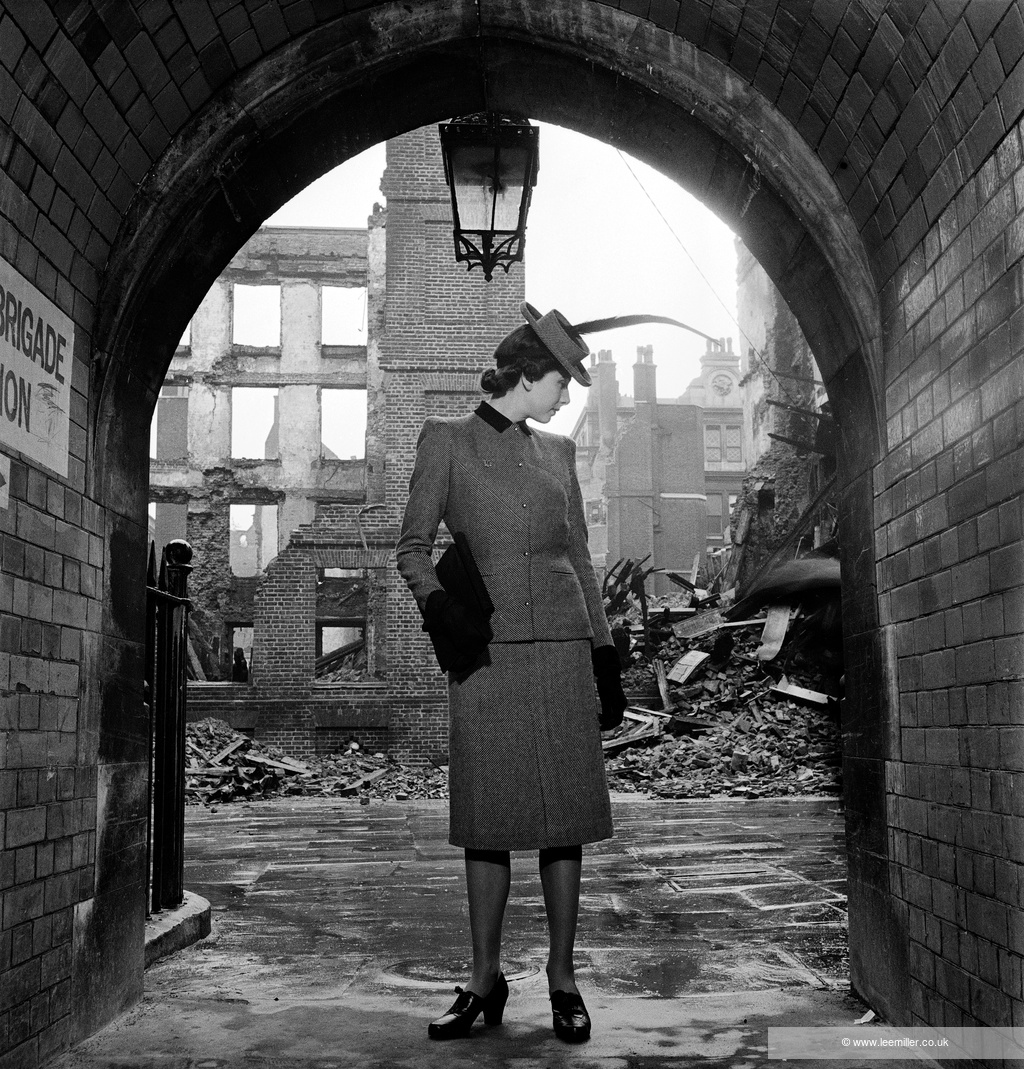
Lee Miller, Model Elizabeth Cowell wearing Digby Morton suit, London 1941. Lee Miller Archives
After time in Paris and New York, where she established her photographic practice, Miller married Egyptian businessman Aziz Eloui Bey and moved to Cairo. Her photographs there epitomise the sideways, wholly unique way in which she approached her subject. When capturing the Great Pyramid of Giza, she avoided shooting in profile, instead focusing on the pyramid’s shadow as it lengthened across the city below. The work is striking in its stark juxtaposition of the ancient with the modern.
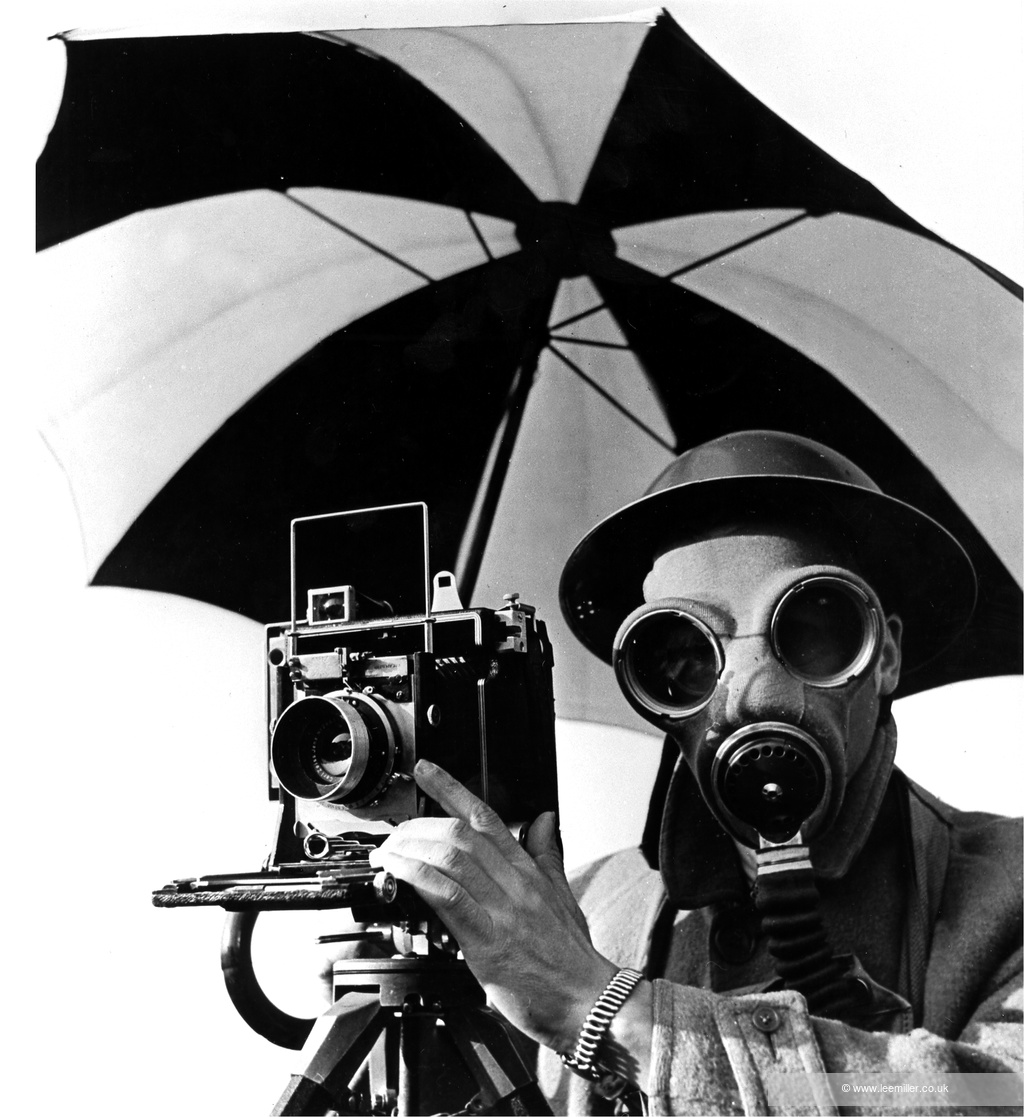
Lee Miller, David E Scherman dressed for war, London 1942. Lee Miller Archives
The crux of the exhibition rests on Miller’s vital role as a war photographer. Following the end of her marriage and the outbreak of the Second World War, Miller left Egypt to photograph war-torn London for Vogue. Frustrated with a sense of helplessness, she was determined to capture scenes from the front line, fighting to become one of the rare female accredited war correspondents. Alongside friend David E Scherman, she was one of the first to reach the just-liberated Dachau concentration camp. Her images of the dead, of the captured officers, of the collaborators are raw with the complex notions of right and wrong, and are indisputably some of the most important works of the 20th century. You can’t look away.
Lee Miller at Tate Britain, from 2 October to 15 February, tate.org.uk
Receive our daily digest of inspiration, escapism and design stories from around the world direct to your inbox.
Farleys House and Galleries are open to the public from April to October each year, farleyshouseandgallery.co.uk
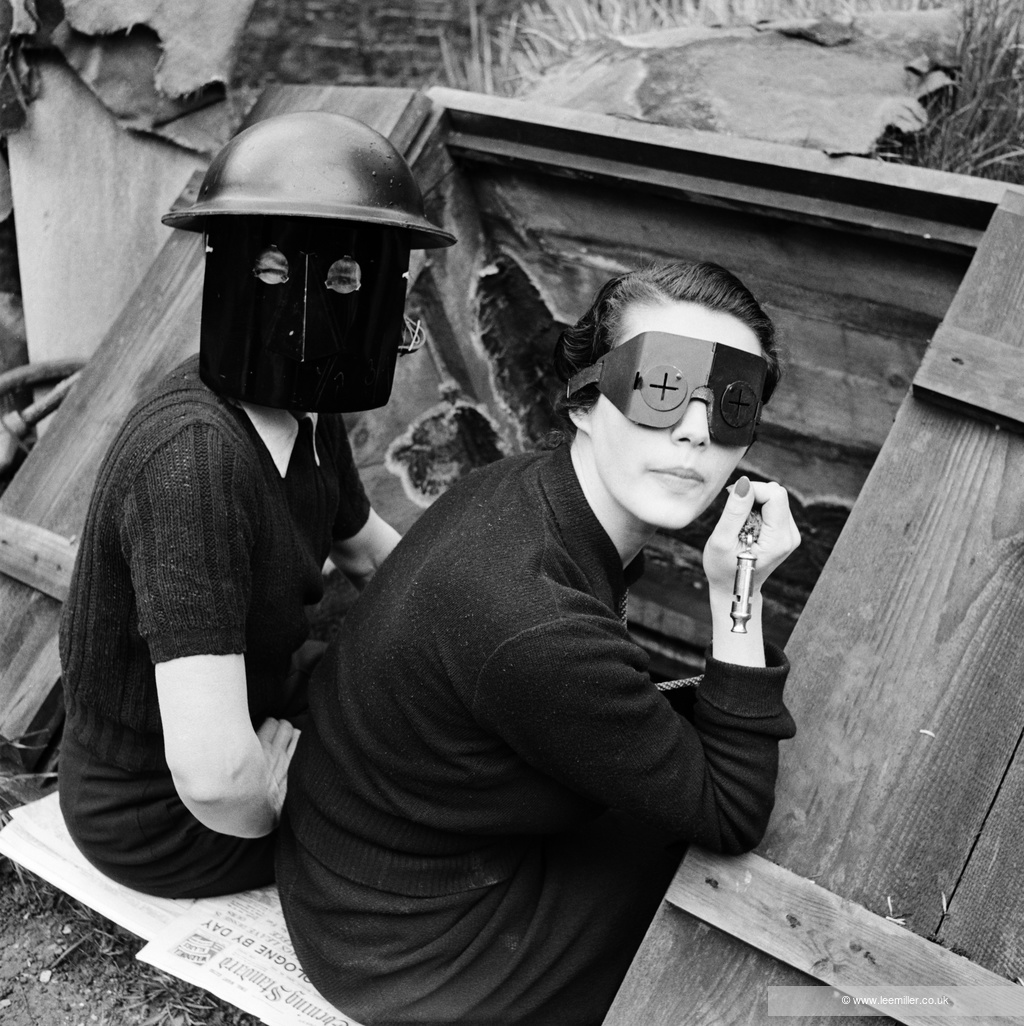
Lee Miller, Fire masks, Downshire Hill, London 1941. Victoria and Albert Museum
Hannah Silver is the Art, Culture, Watches & Jewellery Editor of Wallpaper*. Since joining in 2019, she has overseen offbeat art trends and conducted in-depth profiles, as well as writing and commissioning extensively across the worlds of culture and luxury. She enjoys travelling, visiting artists' studios and viewing exhibitions around the world, and has interviewed artists and designers including Maggi Hambling, William Kentridge, Jonathan Anderson, Chantal Joffe, Lubaina Himid, Tilda Swinton and Mickalene Thomas.
-
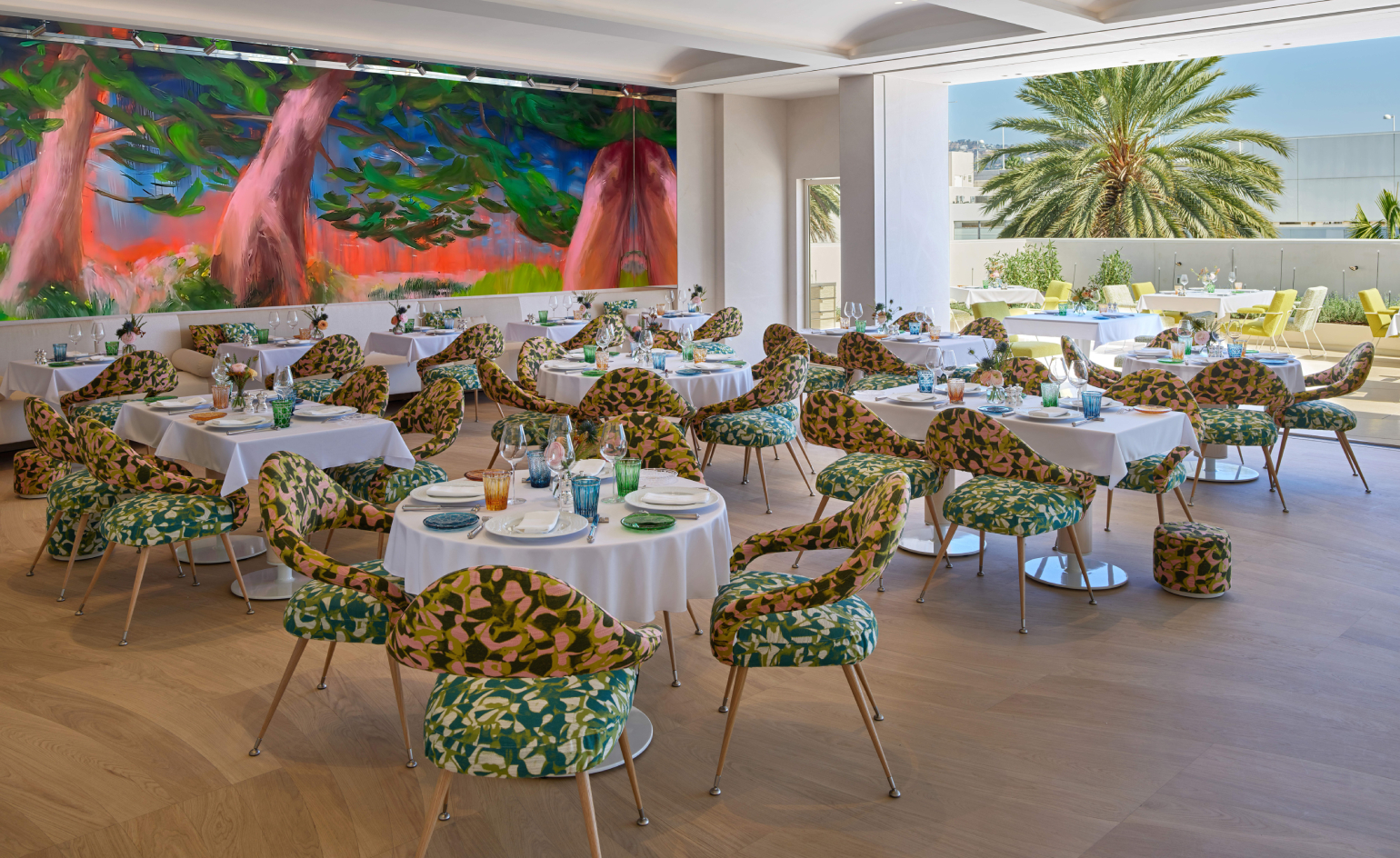 Dior’s new Beverly Hills dining salon raises the bar for couture cuisine
Dior’s new Beverly Hills dining salon raises the bar for couture cuisineFrom Peter Marino’s onyx bar and faceted mirrored walls to Nicole Wittenberg’s vast, immersive botanical canvas, Dior’s first restaurant outside Paris is here
-
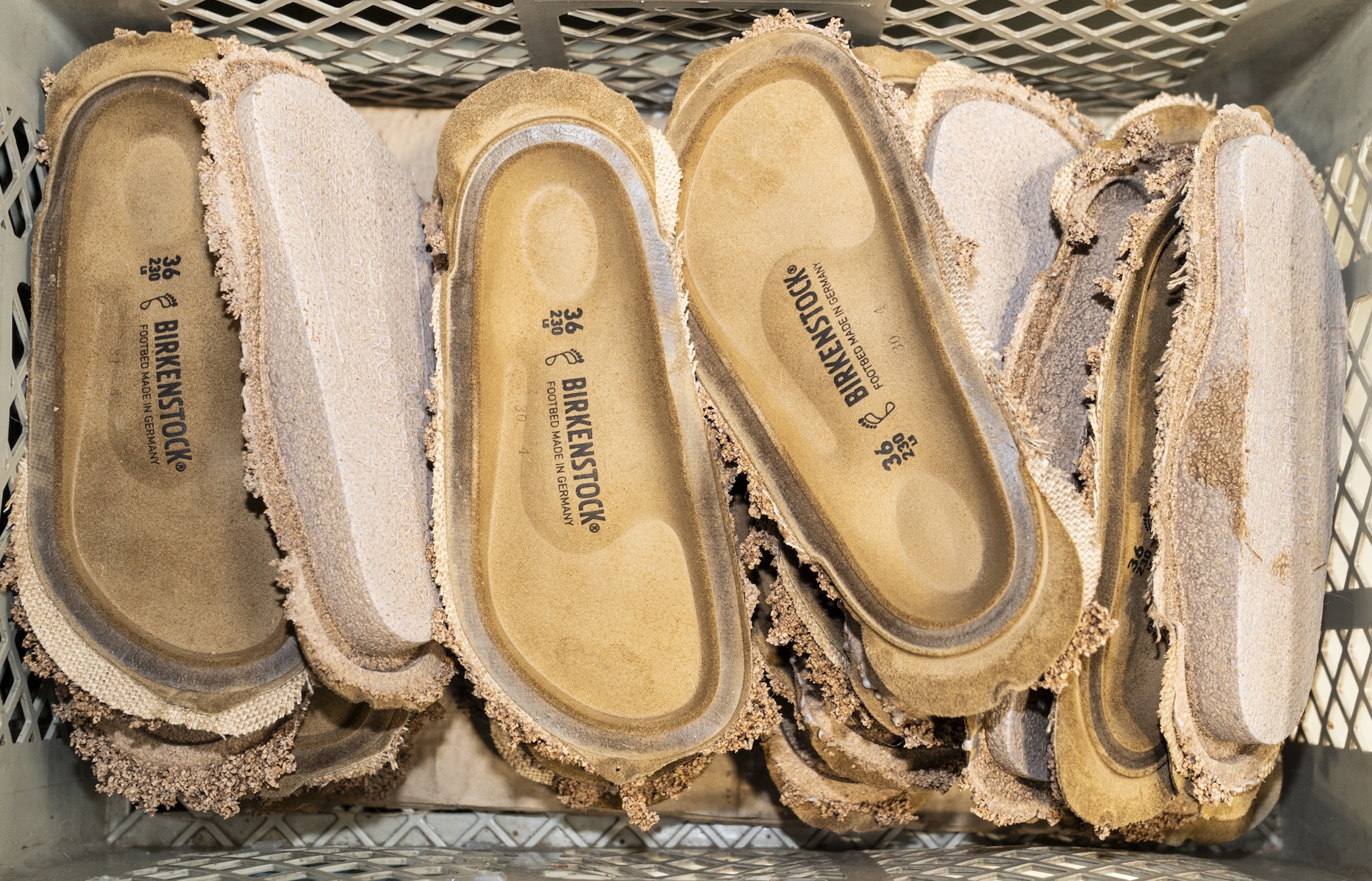 Inside the factory where your Birkenstocks are made
Inside the factory where your Birkenstocks are madePart high-tech laboratory, part artisanal workshop, the German factory straddles past and future. For Wallpaper*, Stuart Brumfitt takes a rare tour
-
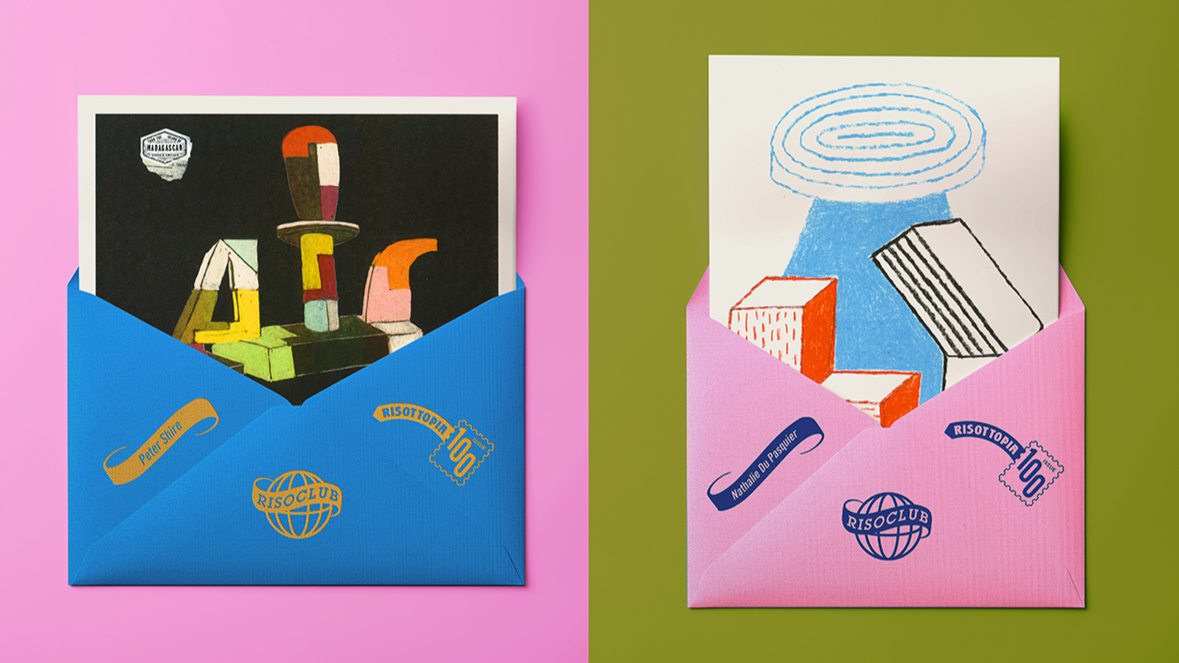 Nathalie Du Pasquier, Peter Shire and Barbara Stauffacher Solomon create exclusive artworks for Riso Club
Nathalie Du Pasquier, Peter Shire and Barbara Stauffacher Solomon create exclusive artworks for Riso ClubGlasgow print studio Risotto celebrates the 100th issue of its monthly Riso Club – a hand-printed, hand-posted subscription that has grown from a small artist exchange into a global community
-
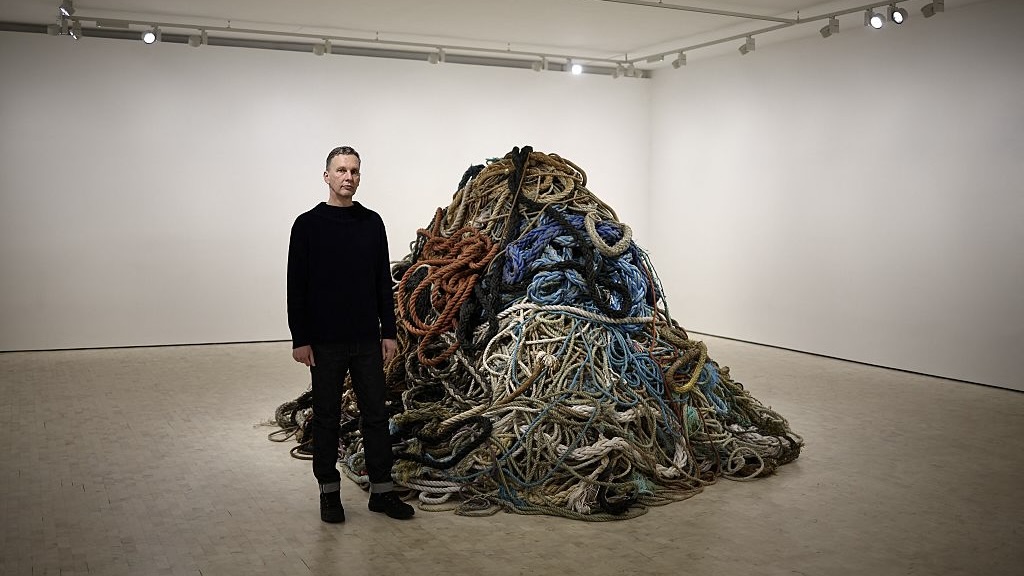 David Shrigley is quite literally asking for money for old rope (£1 million, to be precise)
David Shrigley is quite literally asking for money for old rope (£1 million, to be precise)The Turner Prize-nominated artist has filled a London gallery with ten tonnes of discarded rope, priced at £1 million, slyly questioning the arbitrariness of artistic value
-
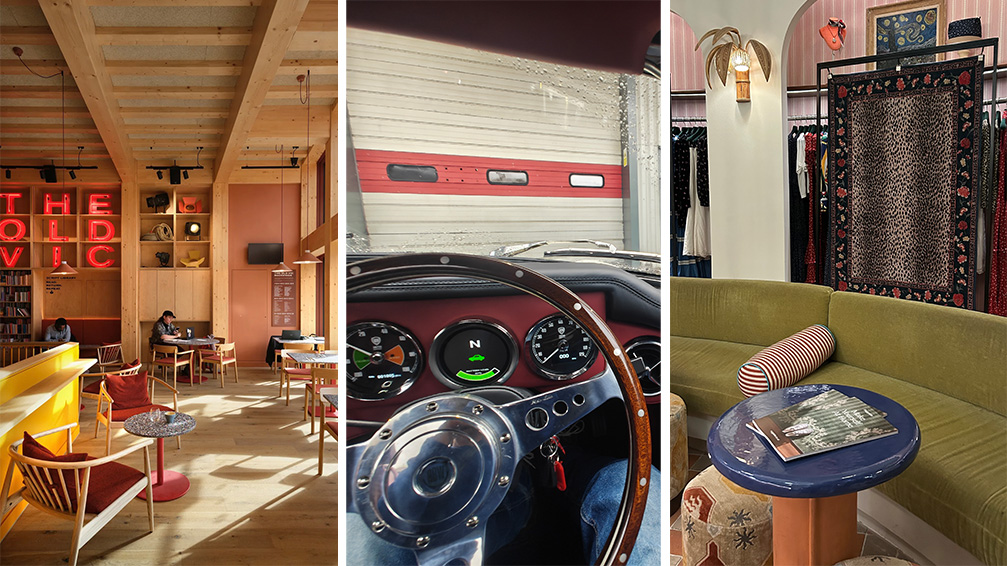 Out of office: The Wallpaper* editors’ picks of the week
Out of office: The Wallpaper* editors’ picks of the weekThe rain is falling, the nights are closing in, and it’s still a bit too early to get excited for Christmas, but this week, the Wallpaper* team brought warmth to the gloom with cosy interiors, good books, and a Hebridean dram
-
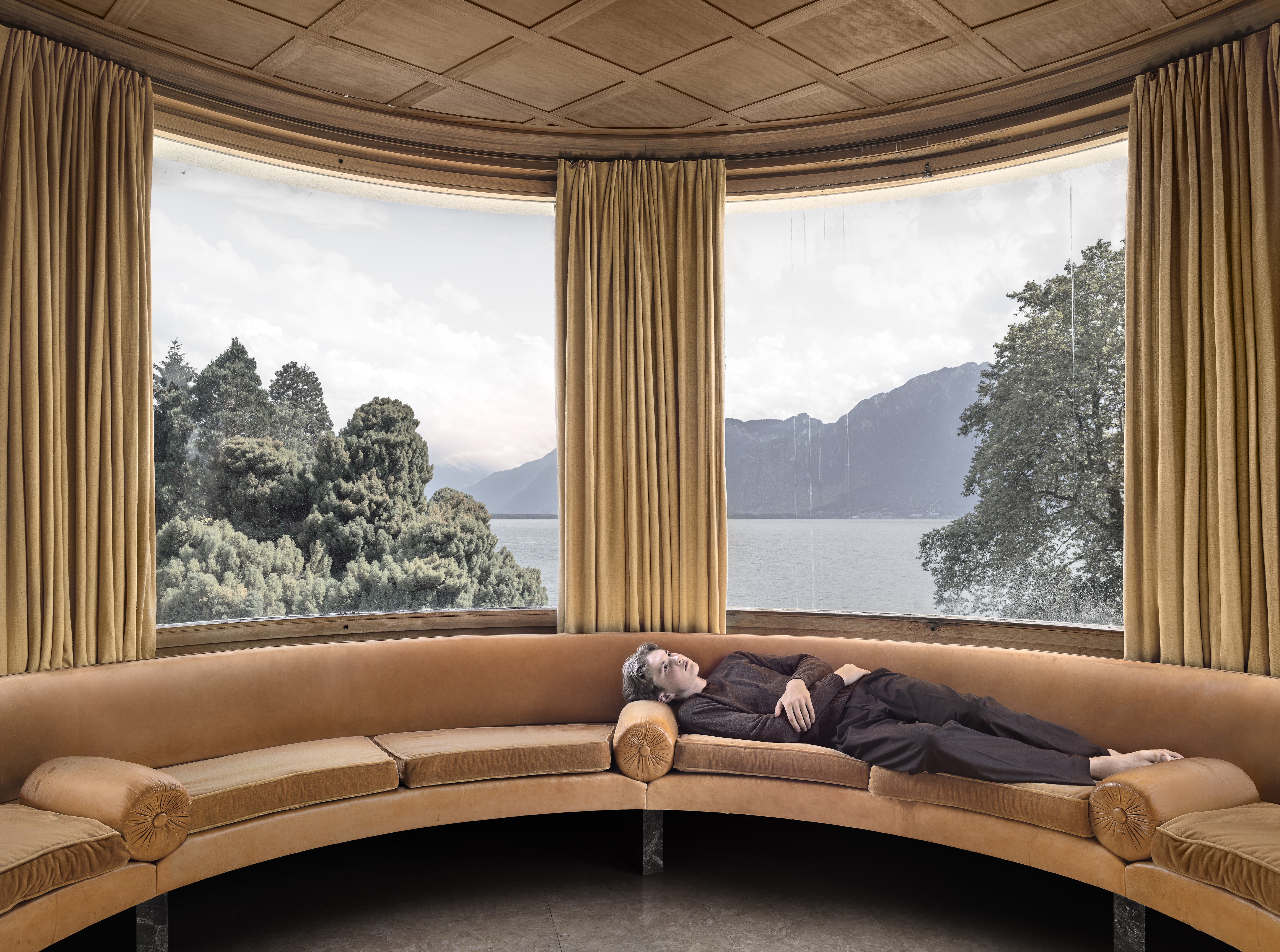 A former leprosarium with a traumatic past makes a haunting backdrop for Jaime Welsh's photographs
A former leprosarium with a traumatic past makes a haunting backdrop for Jaime Welsh's photographsIn 'Convalescent,' an exhibition at Ginny on Frederick in London, Jaime Welsh is drawn to the shores of Lake Geneva and the troubled history of Villa Karma
-
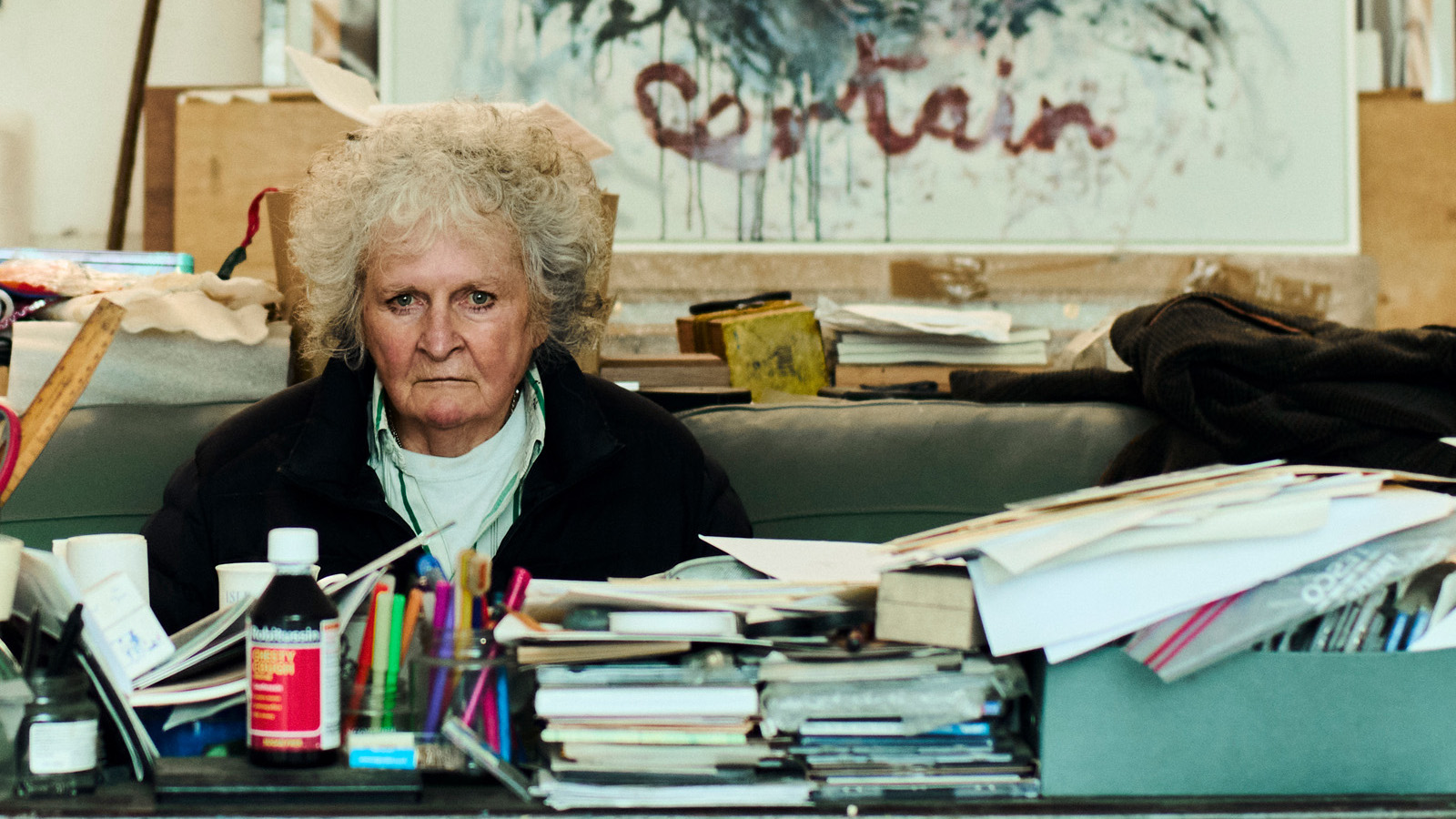 Maggi Hambling at 80: what next?
Maggi Hambling at 80: what next?To mark a significant year, artist Maggi Hambling is unveiling both a joint London exhibition with friend Sarah Lucas and a new Rizzoli monograph. We visit her in the studio
-
 Out of office: The Wallpaper* editors’ picks of the week
Out of office: The Wallpaper* editors’ picks of the weekThis week, the Wallpaper* editors curated a diverse mix of experiences, from meeting diamond entrepreneurs and exploring perfume exhibitions to indulging in the the spectacle of a Middle Eastern Christmas
-
 Artist Shaqúelle Whyte is a master of storytelling at Pippy Houldsworth Gallery
Artist Shaqúelle Whyte is a master of storytelling at Pippy Houldsworth GalleryIn his London exhibition ‘Winter Remembers April’, rising artist Whyte offers a glimpse into his interior world
-
 Diane Arbus at David Zwirner is an intimate and poignant tribute to her portraiture
Diane Arbus at David Zwirner is an intimate and poignant tribute to her portraitureIn 'Diane Arbus: Sanctum Sanctorum,' 45 works place Arbus' subjects in their private spaces. Hannah Silver visits the London exhibit.
-
 Zofia Rydet's 20-year task of photographing every household in Poland goes on show in London
Zofia Rydet's 20-year task of photographing every household in Poland goes on show in LondonZofia Rydet took 20,000 images over 20 years for the mammoth sociological project